- Hey Dullblog Online Housekeeping Note - May 6, 2022
- Beatles in the 1970s: Melting and Crying - April 13, 2022
- The Beatles, “Let It Be,” and “Get Back”: “Trying to Deceive”? - October 22, 2021
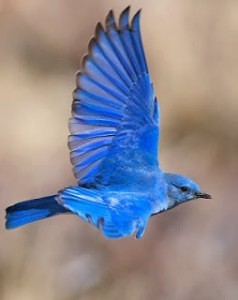
Late at night when the wind is still
I’ll come flying through your door…
{Another in what is becoming a series of meditations on themes in McCartney’s music. Let me know if I’ve missed any bird references! –Nancy}
Birds and wings show up again and again in Paul McCartney’s music–but only in his better music. I’ll go out on a critical limb and declare that whenever McCartney writes about birds or flying– even in passing–he’s revealing a great deal about himself. When he writes about birds McCartney is working to transmute his feelings into music, and even his bird-featuring songs that aren’t critical favorites have much to redeem them. I think it’s no coincidence that his worst solo albums contain no birds at all. Take a look at this aviary and see what you think.
1968-1973: Out of the cage and flying high
“Blackbird” (1968, White Album)
McCartney presents this as a Civil Rights song, and it has those overtones, but I hear it as a song with personal significance as well. It was during work on the “tension album” that McCartney wrote this first song about flying off to freedom. And this song was a pure solo production: no other band members contributed to its composition or played on it. I think “Blackbird” expresses both his desire to get out of the fraught Beatles situation and his trepidation about what that leaving would be like. McCartney’s blackbird has to learn to fly despite “broken wings” and is taking off into the less-than-inviting prospect of the “light of a dark black night.”
“You Are My Singer” (1971, Wild Life)
Appearing on the first Wings album, this song includes the lines “Someday when we’re singing / We will fly away, going winging,” sung by both Paul and Linda. Now the escape is specifically a musical and shared one: the implication is that the power of music can lift the singers romantically above the clouds. (And, of course, the band is called Wings.)
“Single Pigeon” (1973, Red Rose Speedway)
In this song the singer identifies with the lone pigeon flying over Regent’s Park Canal: “Do you need a friend for a minute or two? / Me too — I’m a lot like you.” In this case the singer imagines the pigeon having been thrown out by his mate after a fight, just as he has been. Here a bird is again a marker for emotion, and identification with the bird affords a measure of comfort.
“Bluebird” (1973, Band on the Run)
Band on the Run‘s title song is about breaking free, and in “Bluebird” birds explicitly symbolize transformation and escape. Once changed into bluebirds, the lovers will fly far away to a “desert island” where they can sing in the trees. It’s significant that the album was recorded under difficult circumstances, with only Denny Laine remaining in the band with Paul and Linda, and with various issues arising in Lagos. Like “Blackbird,” these bluebirds are winging away from a tension-filled life.
1974-2001: No birds
After “Bluebird” there is a long, long gap in references to birds or flying in McCartney’s music. The later 1970s were a time of relative stability for McCartney: he’d finally achieved a measure of critical respect with “Band on the Run,” he and Linda were happily raising a family, and until the end of the decade Wings was a highly successful touring band. The bluebirds were living in the trees, so to speak, and perhaps he didn’t feel a further need to write about them.
The end of the 1970s brought two hammer blows: his early 1980 bust in Japan, and John Lennon’s murder in December of that year. Apart from 1982’s Tug of War, this decade was a retreat from risk and self-revelation for McCartney, a retrenchment I think was driven by Lennon’s death. McCartney and Lennon never fully made their peace, and that coupled with the rise of the cult of St. John was very hard on him. McCartney has always preferred to reveal his deepest feelings indirectly, often through character or story songs, but in this period McCartney can be justly accused of releasing music without quality or substance.
Much of his 1980s music sounds like a desperate bid for popularity, and the mid-1980s were marked by a trifecta of truly awful McCartney albums (Pipes of Peace in 1983, Give My Regards to Broad Street in 1984, and Press to Play in 1986). After this dismal run 1989’s Flowers in the Dirt was a welcome sign of new life. In 1995 McCartney got together with George Harrison and Ringo Starr for the Beatles Anthology sessions, and the quality of his music picked up. 1997’s Flaming Pie was the best work he’d done in years.
McCartney made a real leap forward in 1998, with the Fireman’s “Rushes” album. Linda McCartney died in April of that year, and “Rushes” was released that September. This ambient/electronic album — still far too little known and appreciated — is clearly McCartney’s way of dealing with Linda’s death in musical terms. (This could be the subject of a whole post). In keeping with McCartney’s preference for keeping his deepest emotions veiled, Rushes was released with no indication of his involvement in the project.
I don’t think it’s coincidental that after this emotional reckoning the birds come back.
2001-2012: Birds of despair and tentative hope
“Rinse the Raindrops” (2001, Driving Rain)
Easily the most harrowing song McCartney has written, all the bleaker for the contrast between the optimistic words and the crushingly intense music. McCartney employs the birds/escape metaphor here, but the music and his agitated vocal delivery belie the surface meaning of the lyrics: “See the sunlight, break the ice / For the birds of paradise / Listen to the song they sing / Awakening.” It’s clear from both the instrumentation and Paul’s singing that this won’t happen — it’s a wish (for Linda? For himself?) made without hope.
“You Tell Me” (2007, Memory Almost Full)
In this song the bird — “the bright red cardinal flew down from his tree” — is a marker of a time lost and betrayed. The singer is addressing his betrayer and asking her to tell him if anything he remembers of a summer of happiness and love was real. Once again McCartney is allowing real life and its emotions, in this case his divorce from Heather Mills, to inform his songwriting. The bitter, menacing delivery of the song is miles from the kind of faux perkiness that marks McCartney’s worst 1980s work. This is a ballad with devastating bite.
“Two Magpies” (2008, Electric Arguments)
In this song from the third Fireman album the bird as a genuine sign of hope returns. McCartney uses the old rhyme “One for sorrow / two for joy / three for a girl / four for a boy” as the basis of a simple acoustic number about finding love again. “Electric Arguments” is the first album McCartney worked on after beginning a relationship with his now-wife Nancy Shevell, and it’s telling that there are two magpies, just as there were two bluebirds flying off together.
“Bye Bye Blackbird” (2012, Kisses on the Bottom)
Obviously not a McCartney original, but his choice to record this standard–and to pace it as he did– is intriguing. He sings it much slower than the original recording, and the effect blends determination and weariness. The speaker is moving on from the unfriendly place represented by the blackbird–the place where no one “loves or understands me”–to be with someone who loves him. “Pack up all my care and woe / Here I go, singing low / Bye bye blackbird / Where somebody waits for me / Sugar’s sweet, and so is she / Bye bye blackbird.” This bird is one of ill omen, representing not only negative emotions but a whole landscape of disappointment that is being left behind.

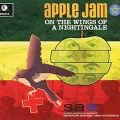
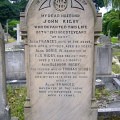
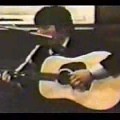

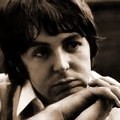
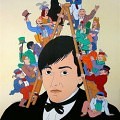
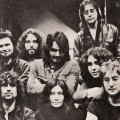
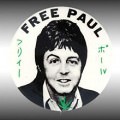
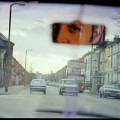
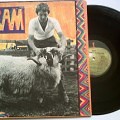
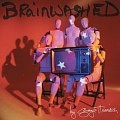
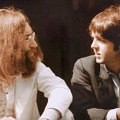
supposedly on his new collection will be THIS track: A Sparrow’s Song- another acoustic track with some very clever lyrics.
Starts the song where you think he’s talking about a bird but by the end of
the song you find that it is about a young girl who has had some tough breaks
in her life but overcomes them.
We’ll se eif it’s true or not when it is finally released later this year (hopefully!)
Nancy, I love this post. Thank you!
What about “Jenny Wren” – do you consider it a bird song? I do. –Ingrid
This is so interesting Nancy. Thank you for posting. I’ve often thought of the bird references and I’ve seen others post about it as well, but never with as much thought applied as you have here. It’s incredible that as you point out, the bird references completely stopped during a certain time period, then they start again.
His early songs mention time a lot. I’ve always wondered why and what the significance of that was.
Ingrid, I agree that although I’m sure he was thinking of the character in a Dickens story, the lyrics imply that he was also thinking of the bird. I.e. “Jenny Wren took wing”. So the song has a few layers of meaning there.
then there’s “flying to my home’
I’M LIKE A BIRD AT THE END OF THE DAY,
FLYING TO MY HOME.
I’M FLYING TO MY HOME, SWEET MAJESTY,
I’M FLYING TO MY HOME
Ingrid, good point about “Jenny Wren” — should have been part of my “McCartney’s Songs of Empathy” post (which you helped instigate!) In “Jenny Wren” the bird/human divide seems rather fluid, as in “Bluebird.” Jenny Wren doesn’t turn into a bird, but she does take wing, as girl remarks.
There’s definitely something deeply emotional at work in all these bird references, IMO.
Trawicki, I forgot “Flying to My Home”! Also, if we count songs McCartney wrote but didn’t perform himself, there’s “On the Wings of a Nightingale,” which he wrote for the Everly Brothers in 1984. And that “A Sparrow’s Song” sounds interesting — hope it surfaces on the new album.
There’s also “This One,” from “Flowers in the Dirt”: “This one is gliding above the ocean / A god is riding upon his back,” which is rather birdlike, though no fowl is specified. An EP cover for the song does feature a big white bird, though.
So “Flowers in the Dirt” in 1989 may mark the return of birds, between “Flying to my Home” (B-side of “My Brave Face”: had to look it up) and the flying reference/bird artwork for “This One.” That would make the “No Birds” period shorter than I thought . . .
Can I just say how much I enjoy geeking out about things like this here in congenial company? Thanks.
This doesn’t quite count, as Paul didn’t write it, but the song Mary Hopkin did called “Sparrow” is gorgeous. And Paul’s production is incredibly smart, subtle, atmospheric, and empathetic.
This One is definitely a bird song. The title and lyrics are wordplay: This Swan. The lyric goes: This one (this swan) is gliding, across the ocean … And the video also has images of the swan. That was all intentional.
Great song, actually.
I generally agree with your analysis and lord knows that the 80s is the period of his career that I would rather ignore. BUT: Say Say Say was and remains a great pop song. And the much-maligned (in the UK) Frog Chorus has a gorgeous melody and arrangement. Just because it’s a song aimed at very young children (who usually love it, I’ve found) doesn’t mean it’s a bad song. So there are little gems here and there in the 80s.
Interesting analysis, though. Food for thought.
— Drew
I’ve always loved ‘Flying to My Home’. Its better than half of the tracks on Flowers. Paul has a way of throwing some of his better cuts onto B-sides. I respect that he wants to make a cohesive album and all, but there are some gems floating around out there that should have been on his albums proper. Having said that, I do love his bird- themed songs. I had never considered that he stopped writing them during his fallow years. Wings over the world, indeed.
Great post and comments!
Cheating here, but there’s “Palace of the King of Birds” (later “Castle of the King of Birds”) — first tried out during the Get Back sessions, then eventually recorded with Wings for a Rupert the Bear soundtrack that never came out. Alas, an instrumental and thus no deeper meaning. I don’t know anything about the Rupert canon to know if the birds are a thing or if it’s a title Paul came up with on his own.
(Gratuitous link to a post from last year about this song over at my blog: http://theymaybeparted.wordpress.com/2012/08/27/here-comes-the-bird-king/ )
-Dan
and here’s another:
Bees are buzzing around my sweet, delectable baby,
Birds are humming about their big surprise.
Who’s your favourite person, dear phenomenal lady?
I belong to the girl with the flashing eyes.
Long haired lady,
Long haired lady.
and he names his book of song lyrics/poetry “Blackbird Singing” as well.
and here’s a very early bird reference from ol’ sir thumbs aloft:
Nobody I know could love me more than you.
You can give me so much love it seems untrue.
Listen to the bird who sings it to the tree
and then when you’ve heard him see if you agree.
Nobody I know could love you more than me.
To further the Paul-as-Bird theory, consider this: In the 2013 animated film/commercial releasted by the McCartney family to promote Linda McCartney Foods in the UK, all of the members of the family are characters in the video — some of them are animated as people and some as animals.
And Paul? He is a bluebird in the video. 🙂
The plot thickens!!!
— Drew
King Kevin, agree with you about “Flying to My Home” being better than some songs on “Flowers in the Dirt,” and about McCartney’s tendency to relegate some good songs to B-sides. “Why So Blue?” is better than some songs on “Memory Almost Full” (my candidate for the B-side treatment would be “Gratitude”), but that song only shows up on the deluxe edition. McCartney has many talents, but editing his own work well isn’t consistently one of them.
More on the flying theme: “Off the Ground,” one of his better early 90s songs, definitely shares the let’s-get-up-and-away vibe.
Nature in some form often shows up in McCartney songs (“smell the grass in the meadow”!), not so often in Lennon’s. “Free as a Bird” is the only Lennon song I can come up with that has a bird (or any animal) in it, and I can’t come up with much nature imagery either. Am I blanking on this, or are they really not there?
And Dan, that’s fascinating about “Palace of the King of the Birds.” McCartney has a tendency to write instrumentals — some of them quite good. I’ll have to see if I can find this one to listen to.
Hmmm… There’s a cat and a dog in “Crippled Inside”… “This Bird Has Flown”, “And Your Bird Can Sing” and “Sweet Bird of Paradox” (I know, I know)… Henry the Horse… the menagerie at the end of “Good Morning”… “I Am the Walrus”, which mentions a dead dog… “tiger hunting with his elephant and gun”… “seashell eyes”… “the eagle picks my eye, the worm he licks my bone”… “…Me and My Monkey”… “Hey Bulldog/frog”… “Dig a Pony”… the wolf howl just before “Scared”… uhm… does “Beef Jerky” count?
Great post and – in general – blog, by the way!
Regarding This One, he does seem to say “this swan.” At least I’ve always heard it that way.
and he names his book of song lyrics/poetry “Blackbird Singing” as well.
Good point trawicki. And didn’t Nancy mention in this post that he’s singing about himself in the song Blackbird? So your point makes Nancy’s analysis even more plausible. I never quite bought that “civil rights” explanation. I always felt that was his simplistic answer, as if he thought he should put a more universal slant on the meaning. Also I hate to say this but it felt to me like he was using that excuse to sound more political because he felt that perhaps he should.
Velvet Hand, thanks for all those Lennon animal references! Three bird titles, easily. Can’t believe I missed those. I do wonder if Lennon identifies with birds in the same way, though. I think not, but I’m going to have to ruminate on that.
girl, I think McCartney resists thinking analytically about his lyrics, and that he’s suggestible when others say what they think he means. That’s what I make of the “Blackbird” = civil rights explanation, anyway. I do think that might have been at the back of McCartney’s mind, but I think “Blackbird” is a much more personal song than a political one.
Hi Nancy! Bird titles yes, but perhaps featuring “birds” as in “fair maidens”? 🙂
Unlike Paulie, John – it seems to me – used actual animals in his songs whenever he wanted to convey something rum/odd/nasty (except that bit from “Julia”). No surprise there as it wasn’t John who had a sheep farm, rode horses, wrote songs about his dog, etc.
Which reminds me: Anyone else ever wonder just who took care of Martha whenever Paul was busy touring the world/spending nights in the studio/being the center of the London Partyworld? Did they have dog hotels in the Sixties? Or was there dedicated staff at Cavendish Avenue?
Velvet Hand, Paul did have some sort of staff at Cavendish. They took care of his dog. Also Jane and her mother had their own keys so they could go in and out as they pleased and tend to Martha as well. Also Paul’s brother as well as his dad, seemed to be in and out and probably also had keys. But even so, it seems Paul often took Martha with him whenever he could.
Velvet Hand, I think you’re right about Lennon’s animal references. “Bird” pretty much means “girl” (except in “Free as a Bird.”) Lennon doesn’t identify with animals, but uses them as you said, to indicate something “rum/odd/nasty.” “Hey Bulldog” is a good example.
As for Martha, I remember reading a quote from Francine Prose (the one who wrote “Body Count” about all the rock stars she’d been with in the 60s) in which she complained about having to take care of Martha and comb out her fur, during the time she was with McCartney. Have to say that reading the quotations from her left me with no desire to read her book . . . . .
“Anyone else ever wonder just who took care of Martha whenever Paul was busy touring the world/spending nights in the studio/being the center of the London Partyworld? Did they have dog hotels in the Sixties? Or was there dedicated staff at Cavendish Avenue?”
Francine only lived with Paul for 2 months so she didn’t actually spend that much time taking care of Martha. (And yes her book is worth ignoring; she sure got a lot of mileage out of a 2 month fling.)
But lots of other folks helped Paul take care of Martha . I read that sometimes he would have the fans who used to hang out front of his house take Martha for walks. He also had a housekeeper. And Jane Asher lived there until spring of 1968 (or so). I’m sure there was no shortage of people happy to help take care of dear Martha.
Must have been cool to run into Paul taking Martha for a walk in the park.
— Drew
Nancy – I had no idea that the author of “Caravaggio: Painter of Miracles” and “Anne Frank: The Book, the Life, the Afterlife” had a fling with Paul McCartney! Not sure if that makes him seem “deeper” or her more interesting, though… 🙂
Guys, Francie Schwartz was the person who had a fling with Paul, not Francine Prose.
Carry on–
Don’t say my last comment was too subtly snarky!
My apologies for the Schwartz/Prose gaffe, everyone: this is how rumors start! Francie Schwartz is to Francine Prose as Pamela Des Barres is to Alice Munro, so I extend my abject apologies in Ms. Prose’s direction.
Must have been cool to run into Paul taking Martha for a walk in the park.
— Drew
Or Paul and John walking Martha in the park! I’ve seen pics of both them walking her! 🙂
I would love to ask Paul about Blackbird. One of the meanings of the Lennon name is Blackbird.
In Gaelic, Anon?
Paul McCartney “The Fireman” – Traveling Light
https://www.youtube.com/watch?v=SH57b_4fJWA
The published lyrics to “This One” do in fact pivot to “The swan” during the bridge:
“There never could be a better moment
Than this one, this one.
The swan is gliding above the ocean,
A god is riding upon his back…”
Also: “Songbird in a Cage” written by McCartney for Charlotte Gainsbourg, released in 2017
Also: “Long-Tailed Winter Bird” from the upcoming McCartney III
Also in “She’s Given Up Talking” … “She’s given up talking, don’t say a word, even in the classroom, not a dickie bird” (albeit merely slang for girl here).
Ever look into the origin of family names? One of the meanings for the surname “Lennon” is interesting: https://en.wikipedia.org/wiki/Lennon_(name)